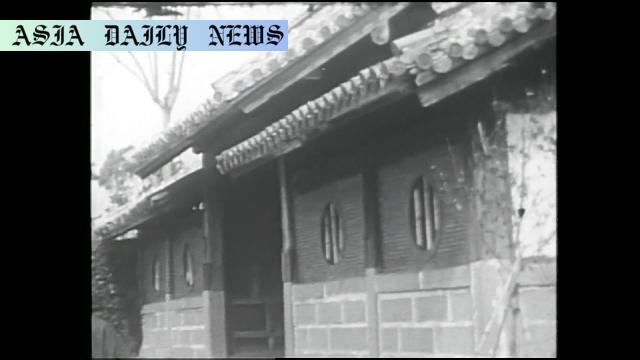Nagasaki temple: Archival footage of Fukusaiji Temple, lost in the 1945 atomic bombing, discovered showcasing pre-war memories.
- Archival footage of Nagasaki’s historic Fukusaiji Temple found.
- The temple was built in 1628 and destroyed during the 1945 atomic bombing.
- The newly discovered pre-war footage offers rich historical insight.
- Nagasaki University deems the footage as a significant historical resource.

Preservation of Fukusaiji Temple’s Legacy
The remarkable discovery of archival footage featuring the Fukusaiji Temple, a renowned national treasure of Nagasaki, offers fresh historical insights into its pre-war glory. This significant finding, revealed by NHK, consists of a 41-second black-and-white film shot in the 1930s by kabuki actor Nakamura Shikaku. The temple, originally constructed in 1628, stood as a testament to both architectural and cultural heritage until its tragic destruction during the catastrophic 1945 atomic bombing. Thanks to the footage preserved in NHK archives, a three-dimensional glimpse into this iconic site has been made possible. The discovery has been acknowledged as a first-class historical resource by Nagasaki University Professor Emeritus Himeno Junichi, underscoring its rarity and historical value.
The Historical and Cultural Significance of Fukusaiji Temple
Fukusaiji Temple, which served not only as a spiritual location but also as a critical site in Japanese history, holds an enduring legacy. It was designated as a national treasure in 1927 due to its architectural beauty and cultural relevance. Historical records reveal that the temple played host to prominent figures, including samurai Sakamoto Ryoma and Katsu Kaishu during the late Tokugawa shogunate. Situated 2.6 kilometers from the hypocenter of the atomic bombing, the temple was tragically consumed by fire during the wartime event. However, a stone all-night light managed to survive, becoming a silent witness to the temple’s storied past. Now, with the discovery of this archival footage, historians and enthusiasts alike have a unique opportunity to observe a moving image of this revered structure, enriching both academic research and public understanding of Nagasaki’s cultural history.
Implications for Historical Research and Preservation
The newfound footage signifies a substantial leap forward in historical preservation and research. While historians previously relied on photographs and postcards for insight into Fukusaiji Temple, the availability of moving images offers a dimension previously unattainable. Not only does this footage allow for a more vivid interpretation of the temple’s architectural features, but it also enhances public engagement with Nagasaki’s cultural legacy. The footage serves as a stark reminder of the devastating impact of war while simultaneously highlighting the resilience of history and memory. These discoveries expand the narrative of the 1945 atomic bombing and its consequences by integrating visual documentation from before the event, capturing elements that photos or texts alone might fail to convey.
The Broader Impact of Rediscovering Cultural Artefacts
The rediscovery of this archival footage of Fukusaiji Temple contributes to broader discussions on cultural preservation. The potential for such discoveries underlines the importance of archives and institutions like NHK that dedicate themselves to safeguarding historical materials. It also raises public awareness about the value of preserving historical artefacts and encourages further exploration into forgotten or overlooked cultural repositories. With this footage now accessible, individuals and scholars alike are inspired to reflect on the resilience of a community’s cultural identity, despite the trials and tribulations faced over decades or centuries. This rediscovery is not merely about the past; it connects history with contemporary society, providing a source of inspiration and reflection for future generations.



Commentary
An Unveiling of Cultural Significance
The unearthing of the Fukusaiji Temple footage represents more than just an incredible discovery; it is a testimony to the intricate fabric of history and the importance of cultural preservation. It brings to light the story of a temple that has withstood the trials of time symbolically, even as its physical form succumbed to devastation. The rediscovery is not just a boon for historians but a profound reminder to society of what was lost and what continues to endure. Knowing that pieces of history like this can resurface offers a glimmer of hope, emphasizing the value of diligent record-keeping and archiving.
Impact on Modern Society
In a world increasingly oriented toward the future, the discovery of such archival treasures nudges us to take a moment to look back. The significance of these findings lies in their ability to enrich public understanding, foster historical education, and inspire appreciation for the heritage that has shaped modern societies. The Fukusaiji Temple footage also serves as a poignant reminder of the destructive consequences of war, juxtaposed against the beauty and creativity that humanity is capable of producing. It calls for a greater emphasis on peace and preservation, key messages that resonate deeply in today’s turbulent times.
A Call for Greater Archival Exploration
This discovery underscores the necessity for more extensive exploration of historical archives. It is likely that hidden gems such as this footage of Fukusaiji Temple lie dormant in other collections around the world. By making a concerted effort to uncover and share these resources, historians, archivists, and institutions can contribute to a more nuanced and complete understanding of our shared global heritage. This highlights the need for public engagement and financial support for archival works to ensure that cultural and historical treasures are not lost to time. These efforts not only immortalize the past but also provide lessons and insights that remain relevant to contemporary audiences.